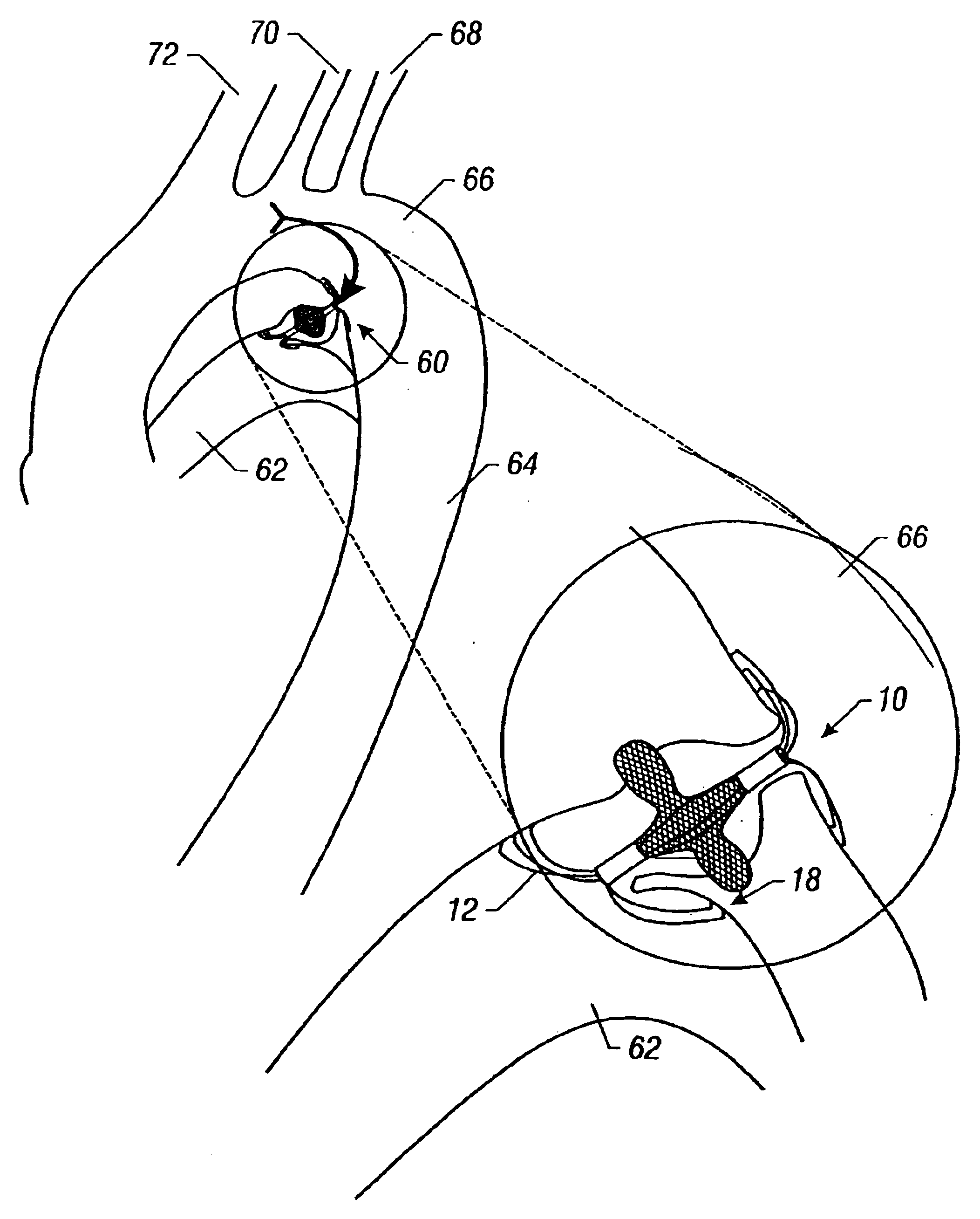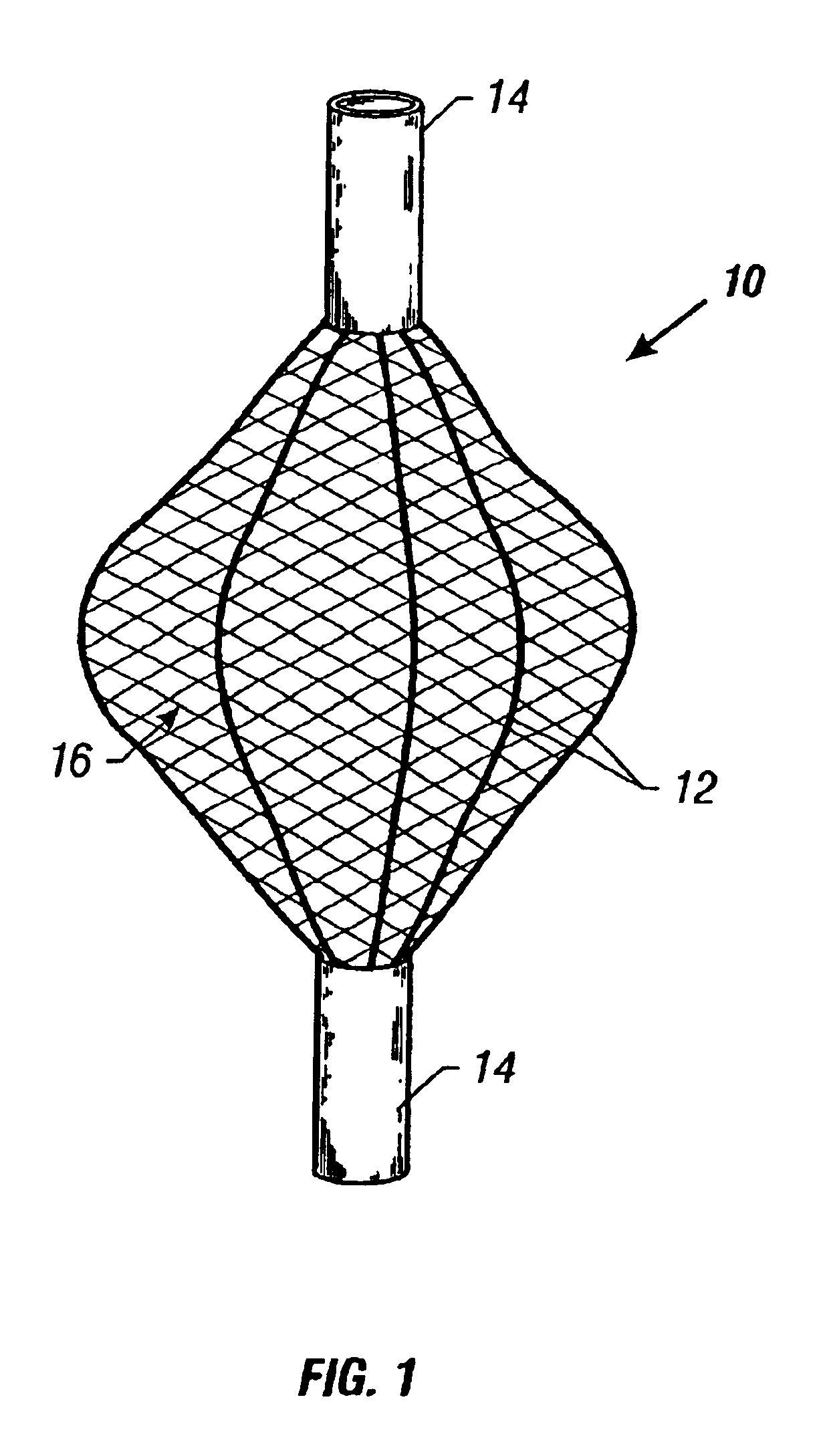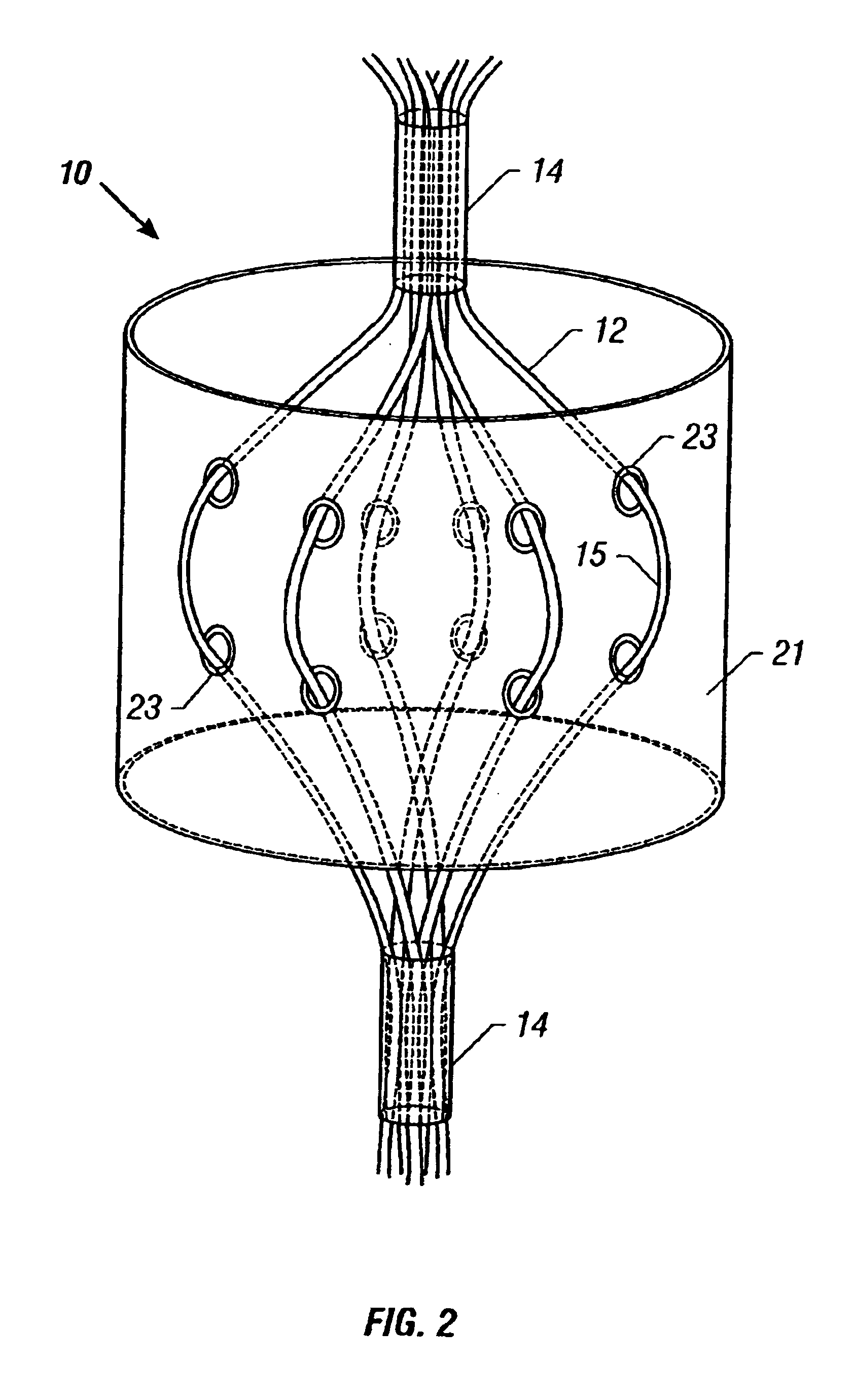Occlusion method and apparatus
a tubular structure and occlusion technology, applied in the field of occlusion of vessels and other tubular structures, can solve the problems of coils not being repositionable, too large drawbacks, and long vascular segments that are often obliterated
- Summary
- Abstract
- Description
- Claims
- Application Information
AI Technical Summary
Benefits of technology
Problems solved by technology
Method used
Image
Examples
examples
[0100]To achieve quick, limited-size vascular occlusion, a self-expanding, self-anchoring basket-shaped vascular occlusion device has been designed and fabricated. Studies have been performed demonstrating occluders 10 in accordance with the present disclosure in a high-flow arterial model.
Device Construction
[0101]Devices of varying size have been constructed from four 0.009 inch nitinol wires held together at each end by a stainless steel clip. Nitinol, an alloy composed of 55% nickel and 45% titanium with a titanium-oxide layer, has been used because of its shape memory properties and established biocompatibility (Liu and Stice, 1990; Castleman et al., 1976). The disclosed occluder configuration has been achieved by pushing the two ends of the wire frame toward each other and then heating the device to 500° C. for 120 min. After allowing the device to cool to room temperature, a bead of silver solder was placed around each steel clip for reinforcement.
[0102]An elastic Dacron jacke...
PUM
 Login to View More
Login to View More Abstract
Description
Claims
Application Information
 Login to View More
Login to View More - Generate Ideas
- Intellectual Property
- Life Sciences
- Materials
- Tech Scout
- Unparalleled Data Quality
- Higher Quality Content
- 60% Fewer Hallucinations
Browse by: Latest US Patents, China's latest patents, Technical Efficacy Thesaurus, Application Domain, Technology Topic, Popular Technical Reports.
© 2025 PatSnap. All rights reserved.Legal|Privacy policy|Modern Slavery Act Transparency Statement|Sitemap|About US| Contact US: help@patsnap.com



